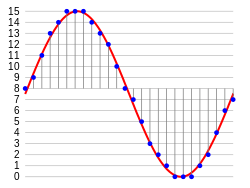Electronic media


Electronic media are media that use electronics or electromechanical audience to access the content. This is in contrast to static media (mainly print media), which today are most often created electronically, but do not require electronics to be accessed by the end user in the printed form. The primary electronic media sources familiar to the general public are video recordings, audio recordings, multimedia presentations, slide presentations, CD-ROM and online content. Most new media are in the form of digital media. However, electronic media may be in either analogue electronics data or digital electronic data format.
Although the term is usually associated with content recorded on a storage medium, recordings are not required for live broadcasting and online networking.
Any equipment used in the electronic communication process (e.g. television, radio, telephone, desktop computer, game console, handheld device) may also be considered electronic media.
History of development
Uses
Electronic media are ubiquitous in most of the developed world. Electronic media devices have found their way into all parts of modern life. The term is relevant to media ecology for studying its impact compared to printed media and broadening the scope of understanding media beyond a simplistic aspect of media such as one delivery platform (e.g. the World Wide Web) aside from many other options. The term is also relevant to professional career development regarding related skill set.